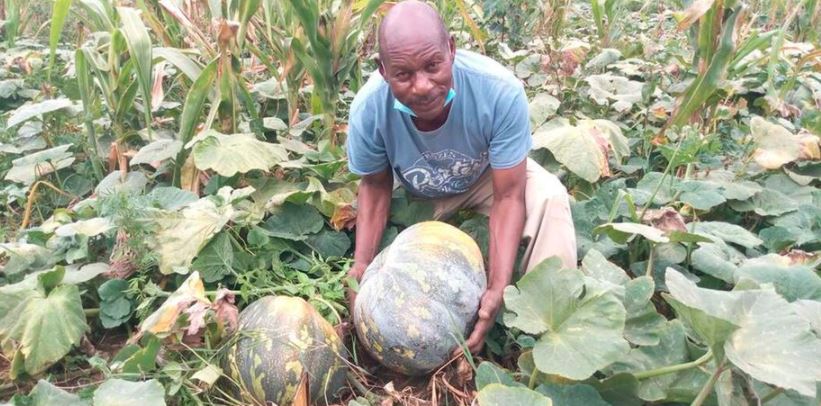
The former army man spoke to Nation about growing the crop which has a huge nutritional value and commercial potential.
When did you start farming pumpkins?
The journey started in 2019 after sourcing seeds from my brother. I planted 40 of them on an eighth acre for home consumption and the harvests were impressive. I harvested 1,000 kilos after spending less than Sh2,000 on manure and labour. This incredible harvest pushed me into commercial pumpkin growing.
How many seeds does an acre-and-a-half need?
About 800 well-dried seeds, which should be extracted from healthy plants. The seeds are directly sown in the soil that should be well-tilled and manured. This is because pumpkin is a heavy feeder. I grow Israel giant and Egypt giant varieties. The crop takes about six months to mature. From my calculations, it takes some Sh28 to produce a kilo of produce, with the money going on land preparation, weeding, watering and pest management.
Paint the picture of the harvest
From the acre-and-a-half, I get up to 15 tonnes, which is not a bad harvest. The crop is a high-yielder because it is not easily attacked by pests and diseases, what makes it profitable as compared to other crops.
What about the market?
This is where there is a problem because marketing the crop can be a challenge. It is still considered a poor man’s crop thus many people don’t consume it. Currently, I am stuck with five tonnes of the produce and I am soon looking forward to harvesting 15 tonnes.
My farm get price is between Sh70-Sh100 per kilo, but I am receiving offers of between Sh6 and Sh10 a kilo. I am in touch with other pumpkin farmers and a good number are stranded with their produce.
In 2019 and early 2020, I got buyers from Nairobi, who bought a kilo at Sh30. But Covid-19 pandemic disrupted this market. The only relief with pumpkins is that you can selectively harvest the leaves and sell them as vegetables earning some more income. Besides that, the produce can be stored for almost a year as one looks for market.
What would you tell anyone who wants to get into pumpkin farming?
If you can’t get a stable market for the produce, don’t grow the crop. Again, know what the market wants. Most pumpkins weigh from 5kg to 30kg, however, vegetable traders want the small-sized if that is your target market because they chop them into pieces, just as it is done with watermelons, and sell. So, if you grow the giant-sized, this may complicate selling.
Why haven’t you tried value addition?
The machines are quite expensive. You need a dehydrating (drying) machne, one for milling and packaging the flour. Value addition is the way to go if one can afford it. Pumpkins can be mixed with various foods because they are rich in vitamins A and C, potassium and Zinc.
They are a good source of fibre, reduces risks associated to chronic diseases and boosts immunity. One needs the knowhow and the technical expertise to mix and mill dried pumpkins and seeds with maize and wheat flour for high nutritious products.
What does it take to grow quality pumpkins?
Daniel Wanjama, National Coordinator Seed Savers Network: Harvest the seeds and dry them well. Grow them in a hole with a depth of 10cm. Leave 2 metres between the crop and a meter between rows. Since pumpkins are 80 per cent water, they require plenty of it. To assist address market challenges, farmers should form groups and diversify into value addition.
source http://nairobiwire.com/2021/04/my-agribusiness-hustle-i-grow-giant-pumpkins.html
No comments:
Post a Comment